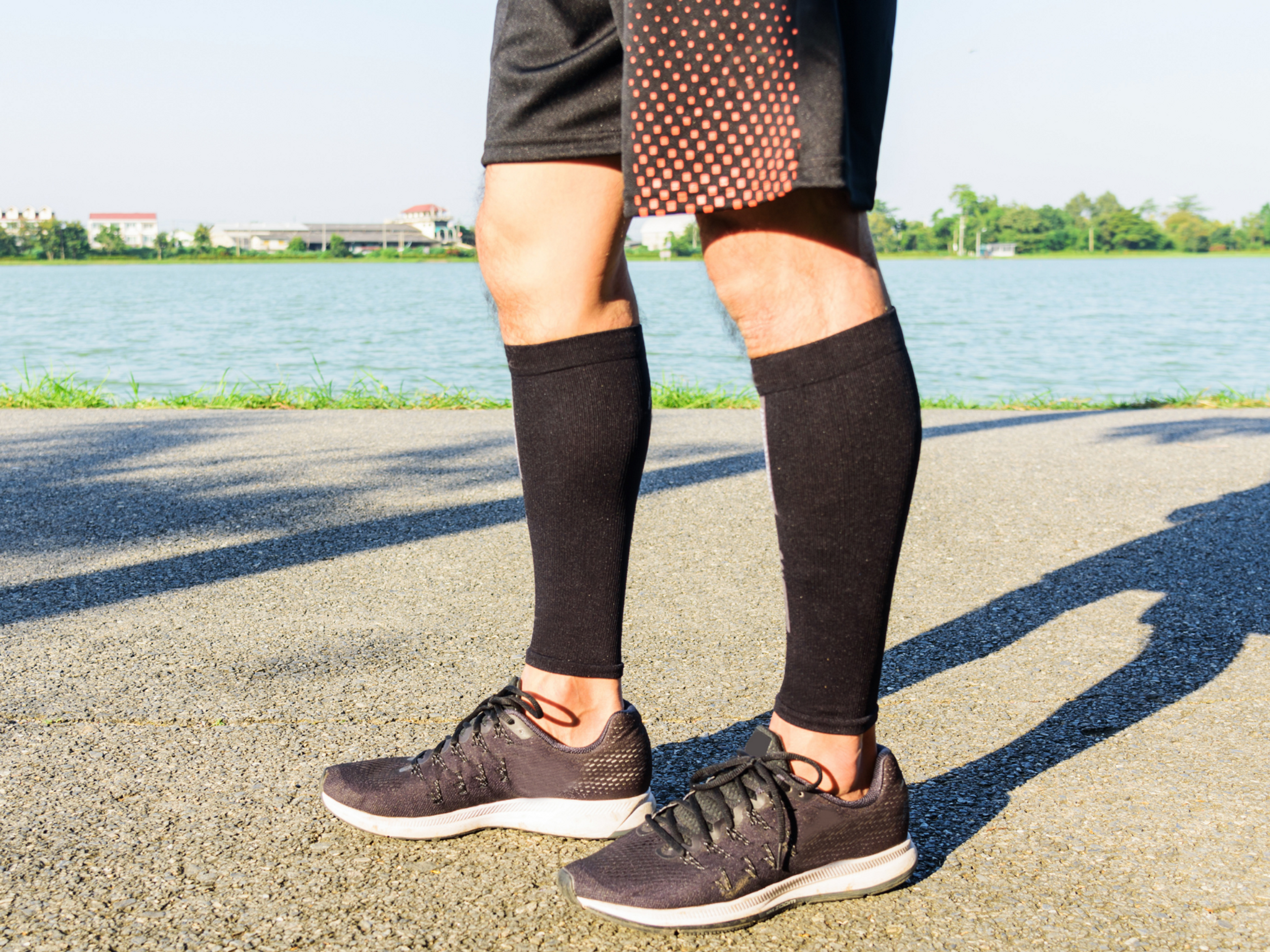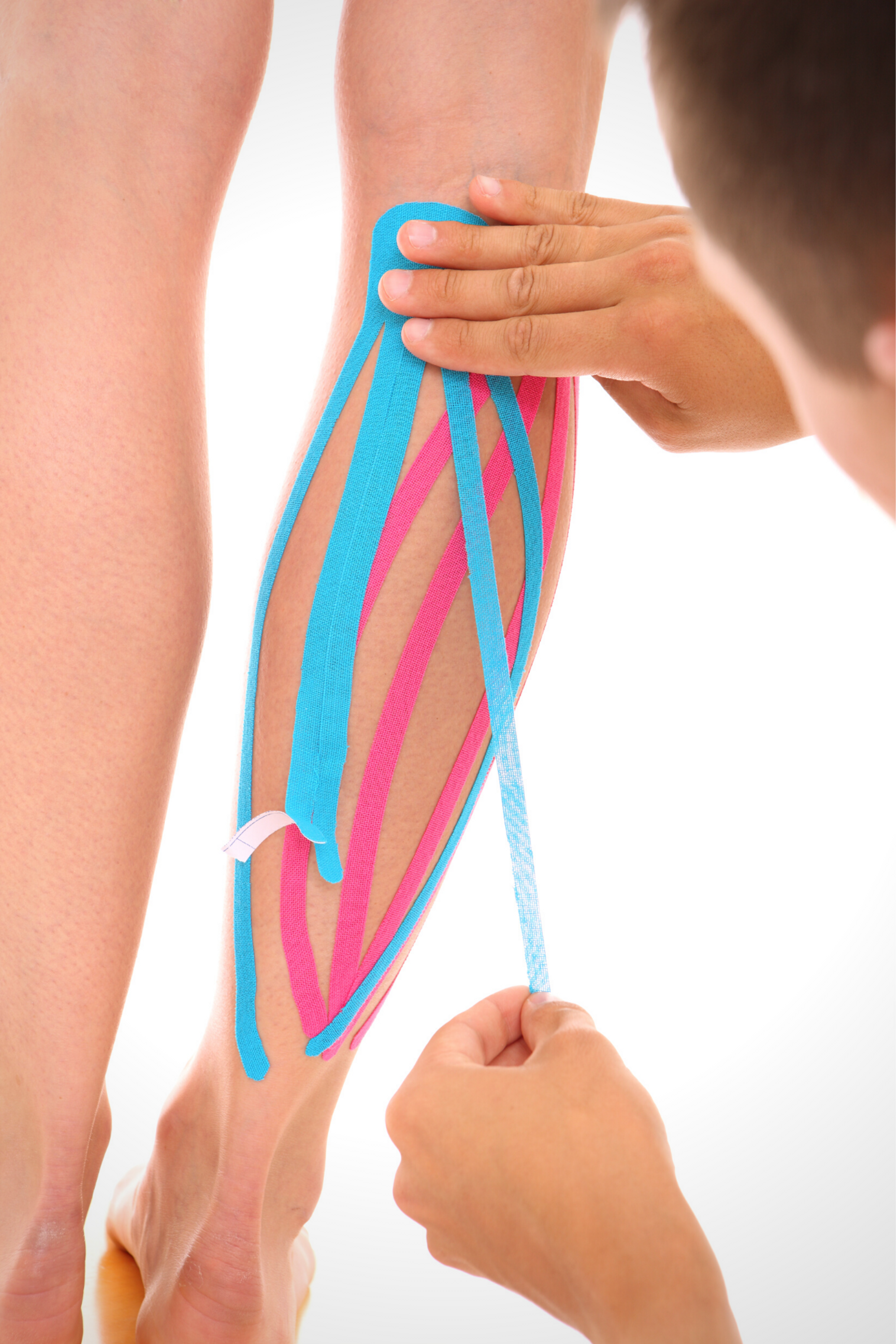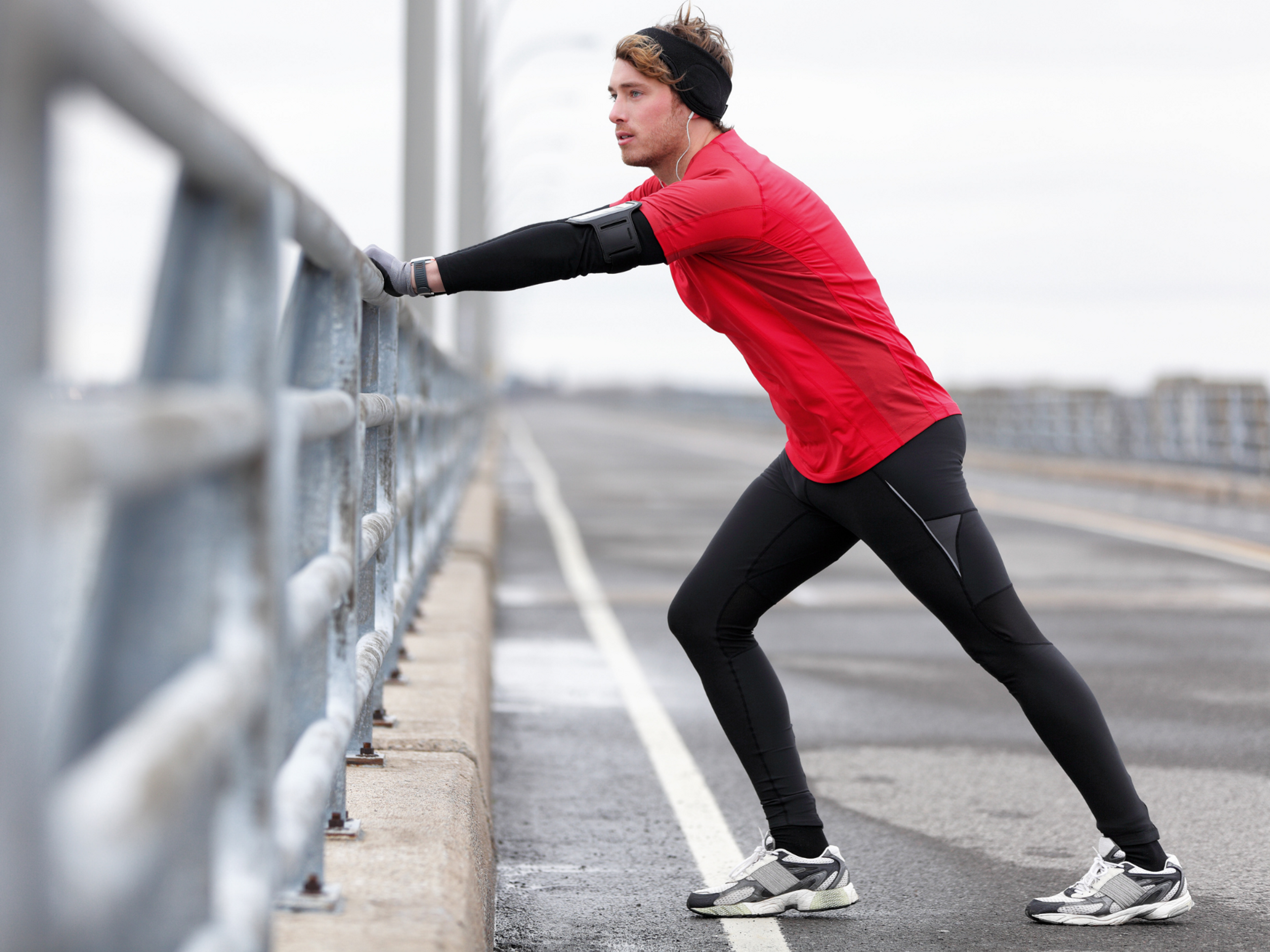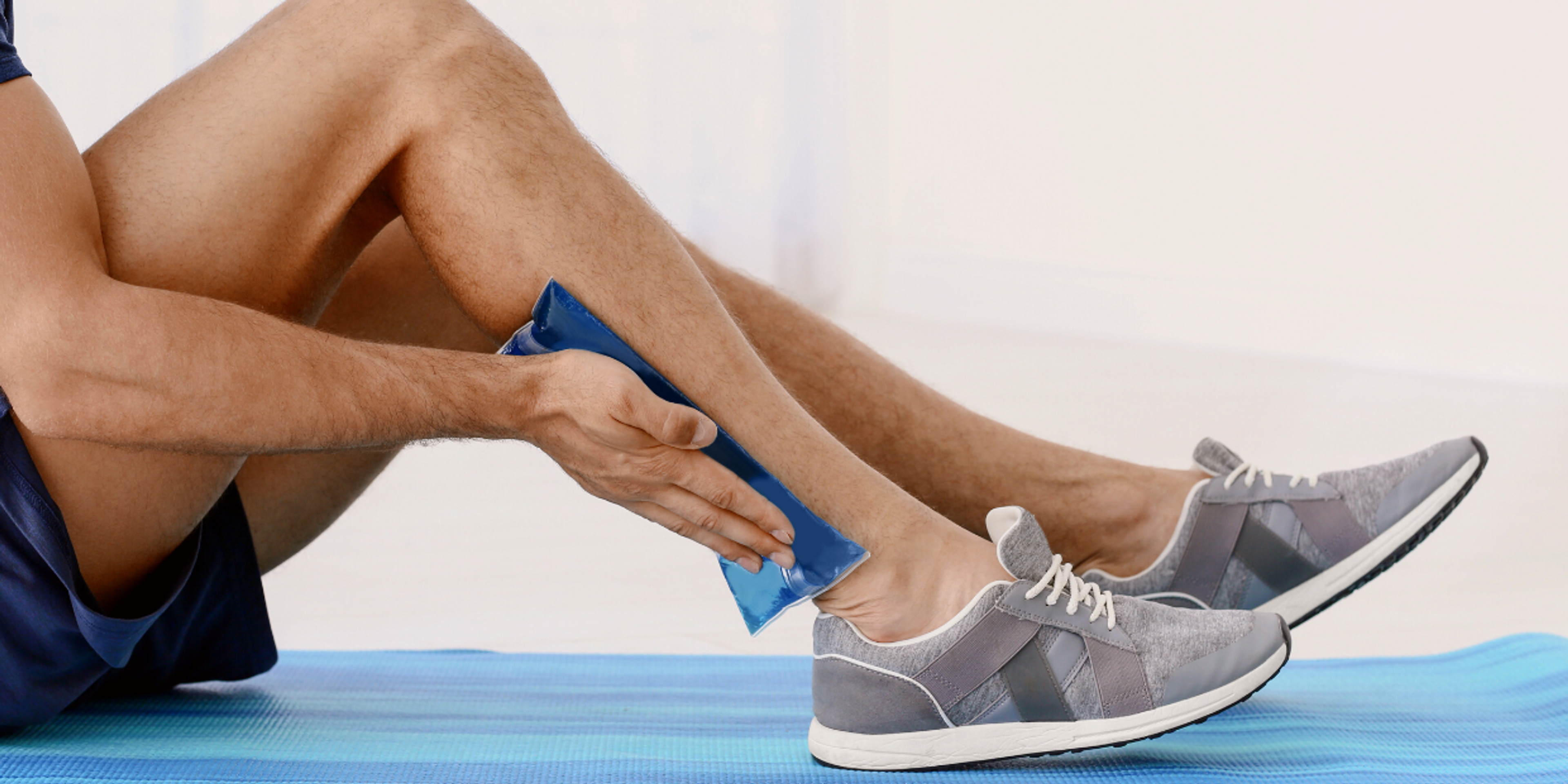Compression sleeves for calf strain: What you need to know
What is a calf compression sleeve?
A calf compression sleeve is an elasticated garment that slides in place over your foot. It fits around your calf from your ankle to just below your knee. You can wear calf compression sleeves during and after workouts or runs.
How do compression sleeves work?
Wearing compression calf sleeves and socks for calf strains has been shown to...
But how do they do this?
1. Improved circulation
Most calf compression sleeves apply a graduated pressure up your calves. This ‘tighter at the bottom – looser at the top’ design, helps direct the flow of fluid away from your calves and up to your heart.
Blood flow
Calf sleeves gently increase the pressure in your veins and help increase blood flow back to the heart. This stimulates your circulatory system as a whole, and in turn, ensures your calf muscles have a constant flow of ‘fresh’ (oxygen-rich) blood in and ‘old’ (oxygen-poor) blood out.
In muscle injuries like calf strain, the more oxygen you have in your muscles, the better they heal.
If you choose to continue wearing calf sleeves once your muscle strain has healed, the benefits will remain. The increased blood flow and oxygen (which fuels your muscles) can help keep your muscles working well, and this may help you run faster and further, for longer.
Lymphatic flow
Calf sleeves increase the pressure in your lymphatic vessels too. The lymphatic system drains away waste products released from your muscles. It also clears the area of old or injured cells to make way for new ones.
Improved lymphatic circulation reduces swelling and pain. It also promotes the healing of the injured tissues during and after exercise or injury.
2. Reduced muscle oscillation
Compression sleeves can reduce muscle oscillation – the vibration that occurs in your muscles as your foot strikes the ground when walking or running.
In calf strain, your calf muscles will be sensitive to most movement. Even walking can be painful. In this case, a calf sleeve helps ‘splint’ the injured area, reducing the vibration in the muscles and protecting your calf from further injury as you move around.
During your return-to-running program, having less vibration in the calves can reduce muscle fatigue, micro-injuries and post-exercise soreness. The same is true after your calf strain has healed.
3. Warmth
Compression sleeves can keep your muscles warm during exercise. Warm muscles have better blood flow and are less prone to fatigue and injury. If you run in colder temperatures or climates, calf sleeves may benefit your training. They can also help prevent calf strains or calf re-injuries.
4. Better sensation and position sense
Calf compression sleeves can improve your reflexes and body position sense while running.
Better sensation and reflex responses in your legs improve your posture and balance – making you more stable on your feet and better at responding to sudden changes in your environment.
Being more stable in your movement lowers your risk of further injury while you’re recovering from a calf strain. It also reduces your chances of re-injuring your calf once you return to running. Especially over longer distances when fatigue may affect your form.
Compression sleeves vs compression socks. Is there a difference?
Although calf compression sleeves and socks use similar graduated compression technology, there are a few small differences between them. Choosing one over the other usually comes down to personal preference and comfort. The differences include:
What it covers
Compression socks fit over your whole foot, ankle and calf. Whereas a sleeve starts at the level of your ankle and only covers your calf.
Potential problems with swelling
Compression sleeves may cause problems with swelling and fluid build-up at the base of your ankles because of where they start compressing (at the ankle). Compression socks don’t have this problem because they compress your whole foot, ankle and calf and the fluid isn’t able to sink back down the leg.
Staying in place
Compression socks tend to stay in place better than calf sleeves because they can only move down. Unlike calf sleeves, which can shift up or down on the calf. By choosing a well-fitting sock or sleeve, you can prevent this issue altogether. More on that later.
Customization / mix and matching
Lastly, calf sleeves offer more customization because you can mix and match them with any socks.
Some people struggle to find the right size socks because they have smaller feet and larger calves, or vice versa. Others want the calf compression benefits but also want to be able to wear their own anti-odor, specially padded or even lucky socks!
If you are dealing with these types of issues, calf sleeves may be your answer. You simply choose a sleeve that fits your calves and then wear any socks that fit your feet. Problem solved!
As you can see, there isn’t much science to this part. It’s best to follow a ‘try it and see’ approach and find what works best for you.
Calf compression sleeves and your return to running: Choosing the right ones
It’s natural to want an extra level of protection for your calf when you start getting back to running after a calf strain.
Before you choose your calf compression sleeve, there are a few things to consider...
How to judge the size
Each brand of compression sleeve will give you a clear guide on how to measure for size. Usually, you will need to measure the circumference of the largest part of your calf and compare it to a size chart.
Compression sleeves should fit well enough to stay in place on your legs without moving around. If they’re moving up or down as you run, chances are they aren’t working.
Calf sleeves deliver a graduated compression. It’s normal for them to be tighter at your ankles than at the top of your calves. They should not be uncomfortable. If they dig into your skin, make red marks or cause pain, they are the wrong fit.
What material is best?
Calf compression sleeves are usually constructed from a nylon-spandex blend. Some are also made of cotton, neoprene or bamboo. And there are many others too. Nylon and spandex are durable and stretchier fabrics. While cotton, neoprene and bamboo are soft and breathable.
Each material has its own benefits and drawbacks. You need to choose the type that works best for you.
If you have any allergies or fabric preferences, that’s a good place to start when choosing your calf sleeves. As long as the sleeves have a graduated compression and fit well, you know they will work. The material is up to you.
Best level of compression
Calf compression sleeves deliver different levels of compression. This is measured in millimeters of mercury (mmHg). The higher this number, the more pressure they apply to your calves. There is currently not enough research to say that a specific level of compression is best.
Over the counter (not medical grade) compression wear like calf sleeves and socks have compression levels ranging from 10 mmHg to 30 mmHg.
As a gauge for runners, the longer or more intense your runs, the more compression you’ll need. Most runners prefer a minimum compression level of 20 mmHg. What’s most important is that they should feel supportive but not cause discomfort.
Other characteristics
Some calf sleeves have add-ons like adjustable support or straps, extra padding and anti-odor or cooling technology. These may be completely unnecessary, or they may make all the difference to your calf sleeve wearing experience!
When choosing calf compression sleeves, the choices can be quite overwhelming.
Our advice is first to understand why you want to use them in the first place. When you know that, tick the most important features off your list first, and then move on to any extras.
Wearing compression sleeves: Safety aspects
How long should you wear calf sleeves?
In general, there is no rule about exactly how long you should wear calf sleeves. It’s more important to know when you should and shouldn’t wear them. Which is covered in the next section.
If you are injury free and exercising, you can wear calf sleeves during exercise and up to 12 hours after if necessary. This depends on the intensity level during your exercise and your activity levels after.
If you have a calf strain, you will most likely be using a calf sleeve to control pain and swelling, especially in the early days.
You can follow the general timelines mentioned above but make sure your calf sleeve fits around your leg properly. Follow the user instructions carefully and make extra sure that the sleeve doesn’t constrict your blood flow at any time.
In the early phases of calf strain, you may not be moving around much while you rest your injury.
When you wear calf sleeves you should be moving around or sitting in an upright position. If you’re going to be lying down or resting in a more horizontal position for more than 2 hours (injured or not), you don’t need extra compression and you should remove any compression gear (unless a medical professional tells you differently).
If you’re sitting, your blood flow can be slowed down by gravity and pool in your legs. This means your veins could do with the extra help of getting the blood back to your heart. This is why people are told to wear compression socks when flying.
Should you sleep with a compression sleeve on?
No. Compression sleeves put constant pressure on your circulatory system. While this level of pressure may be safe during exercise, it is too much for your body at rest.
When you’re lying down, or not moving around, your veins don’t have to fight gravity. They don’t have to work very hard to get the blood back to your heart. So, your circulatory system doesn’t need the extra pressure.
Pressure applied to your veins when you are resting can block your circulation. This can cause a pooling of blood in that area and lead to a blood clot known as a deep vein thrombosis (DVT).
This is why it’s not safe to wear your calf sleeves when you sleep. Even if you are wearing them to help you recover after an athletic event, big training session or injury.
Do calf compression sleeves really help?
Research suggests that most runners use compression sleeves with the aim of improving their performance and post-run recovery, or to prevent re-injury. Few runners use them to treat their current injuries.
From the literature we’ve summarized these points:
- It is not certain yet whether compression garments (like calf sleeves and socks) can improve performance. Although more and more studies are emerging that support the idea, some do not.
- Researchers generally agree that compression gear increases blood flow. With improved blood flow, there is more oxygen in the muscles, and this may promote recovery.
More research needs to be done to find out if calf sleeves can be used to treat calf injuries or improve athletic performance. This means we are unable to say for certain if calf sleeves will help your training and recovery from a calf injury.
At the same time, it’s difficult to ignore the fact that so many runners are using them and feel they make a substantial difference to their running, workouts and recovery.
How to use compression sleeves and socks to treat calf strains
We know compression helps in the early phases of a muscle injury. As mentioned in our calf strain article, following the PRICE protocol is an important first step in treating a calf strain.
You can use a calf sleeve as a convenient alternative to a compression bandage in the first 24 to 48 hours after your calf injury. It can help control pain and swelling.
Bear in mind, calf sleeves compress from the ankle up. If you get swelling around your ankle, a compression sock may be better suited.
It’s important to note that your regular calf sleeve size may not fit when you have a calf strain! You will need to find a sleeve that fits comfortably around your calf until the swelling subsides.
After your injury settles, you can continue to use calf compression sleeves while you progress with your rehabilitation program.
Calf sleeves will not heal calf strains on their own. The best way to treat a calf strain is with a graded strengthening and return-to-running program, similar to the one included in the Exakt Health App.
The Exakt App is a sports injury treatment app designed by our specialist physiotherapists. It contains evidence-based treatment plans and adapts your plan according to your feedback. It’s easy to download from the Apple or Android stores.





